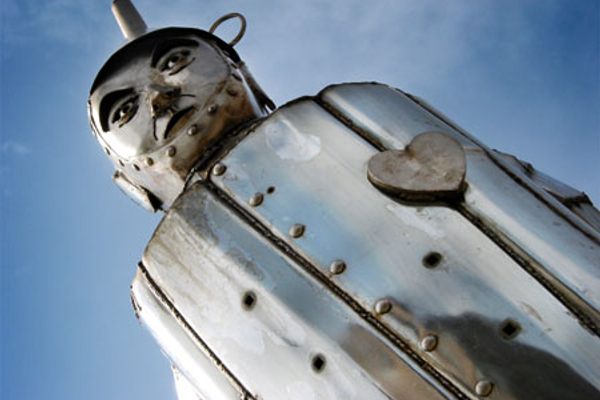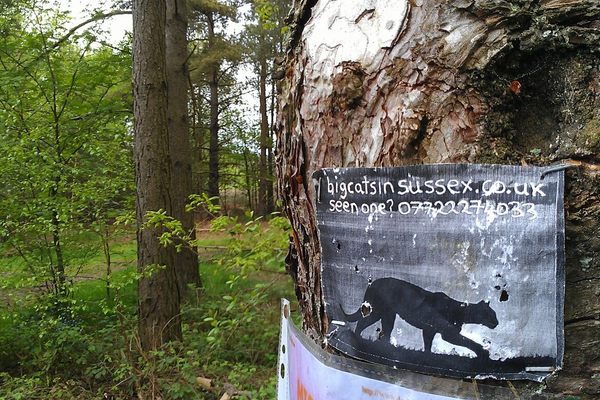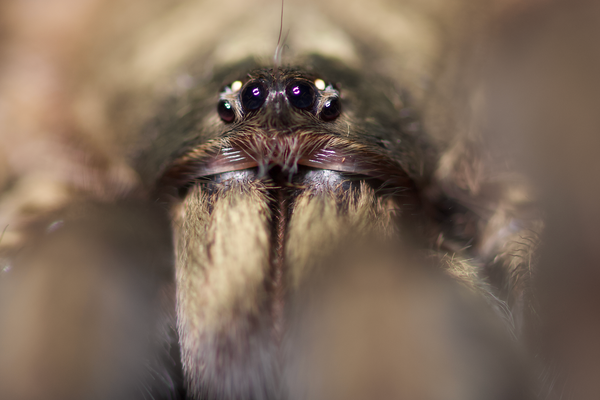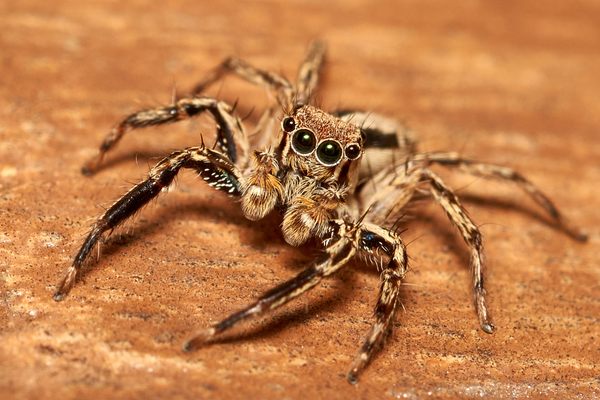This Arachnid in Illinois Had Armored Spikes on Its 8 Legs
The new species is too strange to be assigned a category.
Present-day Illinois is no Brazil or West Africa when it comes to arachnoid superlatives. There are no venomous tarantulas or nine-inch scorpions hiding among the prairie grass, but fossils discovered in the state’s coal measures prove that such critters did once roam the area when it was part of the supercontinent Laurasia. A new study says that one of these arachnids had traits unheard of, such as legs covered in spikes.
The study, published in a May issue of the Journal of Paleontology, describes the species as Douglassarachne acanthopoda—the “acantho” prefix meaning “spine.” The first and only fossil of its kind was buried for 308 million years before Bob Masek, a fossil preparator who has worked at the Field Museum and University of Chicago, found it in the soil heaps of an old strip mine near Essex, Illinois. This area, called the Mazon Creek fossil locality, is known to harbor clay concretions that contain remains of ancient sharks, sea scorpions, spiders, and more from the Carboniferous Period.
The concretion was discovered in the 1980s, initially just a rock with the inside contents unknown. According to the new study, Masek deliberately left it outside for a winter so that frost could penetrate a natural crack and make it easier to split in half with a hammer. Inside the ironstone was an impression of a large spider-like arachnid whose characteristic eight legs were covered in spikes. At the time, Masek didn’t realize how unique it was. Around 1990, he passed the fossil on to private collectors David and Sandra Douglass (hence the name “Douglassarachne”), who displayed it in the basement of their Midwest rock shop for decades before realizing it could represent an undescribed species. In 2023, they gave it to the Field Museum for further research.

“The robust, spiny legs of this animal and its compact body make it unique to anything that’s been seen or described before,” says Andrew Young, manager of the David and Sandra Douglass Collection. “It’s only a few centimeters long, but it was probably formidable as a predator and protected by its spiky appendages.” The spines are believed to have been used for defense, to increase the “handling time” for predators, and possibly to catch prey.
Unlike the arachnids that bear spines today, including striped lynx spiders and spiny-backed orb-weavers, whose appendages are essentially just big hairs, this specimen has real spines—as in “outgrowths of the cuticle,” says lead study author Paul Selden. Young says that David Douglass believed the spines were hairs when he procured the fossil in the ‘90s, which is why he initially thought it was a type of daddy longlegs. But assessments of Douglassarachne acanthopoda since it was handed over to the Field Museum in 2023 indicate that it does not fit into any arachnid order, living or extinct.
“This is the big question,” says Jason Dunlop, co-author of the study. “The new fossil resembles some (but not all) living harvestmen”—aka daddy longlegs—“with spiny legs, and has some vague similarities to mites,” although he says its body is much bigger. The segmentation pattern and slight constriction between the head area and abdomen suggest that it may belong in a group with whip spiders and whip scorpions, “but unfortunately we can’t see the mouthparts, which would help us to confirm this hypothesis.”

So although researchers have given it a dazzling new species name, the spiny arachnid remains afloat in the taxonomic abyss, awaiting its designated order. It joins the ranks of the most bloodthirsty sperm whale in history (Livyatan melvillei) as a member of Incertae sedis, a group of misfits too strange to be assigned to a category.
Young says that one half of the concretion showing the impression of Douglassarachne acanthopoda will be returned to the David and Sandra Douglass Collection, where it will go on indefinite display in their Prehistoric Life Museum, a quirky fossil gallery tucked in the basement of Dave’s Down to Earth Rock Shop in Evanston, Illinois.
Atlas Obscura’s upcoming book, Wild Life: An Explorer’s Guide to the World’s Living Wonders, celebrates hundreds of surprising animals, plants, fungi, microbes, and more, as well as the people around the world who have dedicated their lives to understanding them. Pre-order your copy today!























Follow us on Twitter to get the latest on the world's hidden wonders.
Like us on Facebook to get the latest on the world's hidden wonders.
Follow us on Twitter Like us on Facebook